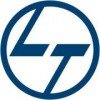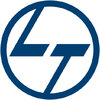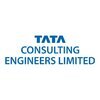Filter interviews by
Nigla Infrastructure & Power Projects Interview Questions and Answers
Be the first one to contribute and help others!
Interview questions from similar companies

I applied via Naukri.com and was interviewed before Sep 2021. There were 2 interview rounds.
(1 Question)
- Q1. Self Introduction, Skills on Particular subject
All about plant, persons,
Interview Preparation Tips
- Industrial Safety

Assistant Manager Interview Questions & Answers
Larsen & Toubro Limitedposted on 12 Jul 2022
I applied via Campus Placement and was interviewed before Jul 2021. There were 2 interview rounds.
Computer aptitude test
(1 Question)
- Q1. Tell about yourself and your interests what are your hobbies etc
Interview Preparation Tips

Senior Engineer Interview Questions & Answers
Kalpataru Projects Internationalposted on 2 Sep 2021
I applied via Campus Placement and was interviewed before Sep 2020. There was 1 interview round.
Interview Questionnaire
1 Question
- Q1. Basic questions
Interview Preparation Tips

I applied via Walk-in and was interviewed before Aug 2021. There was 1 interview round.
(1 Question)
- Q1. .net and db related questions
Interview Preparation Tips

I appeared for an interview before Jun 2016.
Interview Questionnaire
6 Questions
- Q1. What is a bond? What are different types of bonds?
- Ans.
A bond is a debt security that represents a loan made by an investor to a borrower.
Bonds are issued by governments, municipalities, and corporations.
They are used to raise capital and finance projects.
Different types of bonds include government bonds, corporate bonds, municipal bonds, and convertible bonds.
Government bonds are issued by national governments and are considered low-risk.
Corporate bonds are issued by comp...
- Q2. Tell us something about your specialisation subjects of BBA
- Ans.
My specialisation subjects in BBA include marketing, finance, human resource management, and operations management.
Marketing involves understanding consumer behavior and creating strategies to promote products or services.
Finance focuses on managing funds, investments, and financial planning.
Human resource management deals with recruiting, training, and managing employees.
Operations management involves overseeing produ...
- Q3. Which is your favourite subject? Describe about it
- Ans.
My favorite subject is history because I enjoy learning about past events and how they have shaped the world we live in today.
I find studying different time periods and cultures fascinating
I enjoy analyzing historical documents and artifacts
I like understanding how historical events have influenced current societies and politics
- Q4. Are you comfortable in night shifts
- Ans.
Yes, I am comfortable with night shifts as I have prior experience working in night shifts.
I have previous experience working night shifts in my previous job.
I am able to adjust my sleep schedule to accommodate night shifts.
I understand the importance of being alert and focused during night shifts.
I am willing to work night shifts if required for the role.
- Q5. What are your hobbies
- Ans.
My hobbies include hiking, painting, and playing the guitar.
Hiking: I enjoy exploring nature trails and challenging myself physically.
Painting: I find relaxation and creativity in expressing myself through art.
Playing the guitar: I love learning new songs and improving my musical skills.
- Q6. Where do your parents and siblings work
- Ans.
My parents work in education and my siblings work in finance and healthcare.
Parents work in education
Siblings work in finance and healthcare
Interview Preparation Tips
Experience: In this round there was an online test which had objective and subjective questions regarding the mentioned sections.
Duration: 1 hour
Total Questions: 30
Round: Technical Interview
Experience: The interviewer asked such questions about my graduation subjects and a little about how familiar I am of the work the company deals in.
Round: HR Interview
Experience: This round had the HR person ask general questions about my hobbies and about my family background and also told me about the company, its culture and the salary structure
College Name: Maharaja Surajmal Institute Of Technology

Software Engineer Interview Questions & Answers
Larsen & Toubro Limitedposted on 20 Feb 2015
Interview Questionnaire
1 Question
- Q1. About Yourself
Interview Preparation Tips
Experience: Test level was medium, as i also sat for mahindra, i found L&T test was harder than mahindra!
Tips: Just study RS agarwal
Round: Group Discussion
Experience: It was easy for me, coz i was aware about tips of GD
Tips: Be the leader, if possibleTalk in between, even if u dont know topic much
Duration: 20 minutes
Round: Interview
Experience: This question was damn easy for me, coz i can talk more based on my activities & resume
Tips: Dont hesitate, stay calm & describe yourself, but not family background
General Tips: Be yourself, no technical knowledge is required(depends on panel u get)
Skill Tips: ""
College Name: IIT Roorkee
Motivation: To get placed!

Senior Engineer Interview Questions & Answers
Larsen & Toubro Limitedposted on 10 Sep 2015
I applied via PLACEMENT
Interview Preparation Tips
Experience: Good detailed interview in terms of technical knowledge
Tips: Should be thorough with the projects you have done during the course
General Tips: be confident of what you put in your resume
Technical knowledge regarding projects undertaken during engineering should be sound
Be confident
Skills: Communication, Thinking capability, knowledge applying capability
College Name: V.E.S Institute Of Technology
Motivation: Opportunity to work in a renowned and core technical company
Funny Moments: We consider the interview panelists to be as tough as our viva externals. Interviewers are mostly on your side(contrary to viva professors :P)

Senior Engineer Interview Questions & Answers
Larsen & Toubro Limitedposted on 10 Sep 2017
I appeared for an interview before Sep 2016.
Interview Questionnaire
1 Question
- Q1. Ocampo, basic electronics and C
Interview Preparation Tips
Duration: 1 hour
Total Questions: 50
Skills: Embedded Systems, C Programming
College Name: Sahyadri college of engineering

Interview Questionnaire
3 Questions
- Q1. Why do you want to join the company
- Ans.
I want to join the company because of its innovative projects and strong company culture.
I am impressed by the company's track record of successful projects.
I believe the company's values align with my own professional goals.
I am excited about the opportunity to work with a talented team of professionals.
I see great potential for growth and development within the company.
- Q2. Why should we choose you
- Ans.
I am a dedicated and hardworking individual with relevant skills and experience.
I have a strong work ethic and am committed to delivering high-quality results.
I have relevant experience and skills that align with the requirements of the position.
I am a quick learner and adaptable to new environments.
I am passionate about the industry and eager to contribute to the team.
- Q3. What profile would you like to like to work in
- Ans.
I would like to work in a marketing and communications profile.
Experience in creating marketing campaigns
Strong communication skills
Ability to analyze market trends and consumer behavior
Proficiency in social media and digital marketing
Collaboration with cross-functional teams
Interview Preparation Tips

Interview Preparation Tips
Experience: Quantitative, verbal, reasoning and basic technical questions.
Duration: 1 hour
Total Questions: 50
Round: Technical + HR Interview
Experience: Questions based on data structures, algorithms, and object oriented programming concepts.
Tested basic knowledge in Finance sector especially related to the company.
College Name: Delhi Technological University, Delhi
Tell us how to improve this page.
Interview Questions for Popular Designations
Interview Questions from Similar Companies
Nigla Infrastructure & Power Projects Reviews and Ratings
based on 1 review
Rating in categories

Larsen & Toubro Limited

Tata Steel

UltraTech Cement

Shapoorji Pallonji Group
- Home >
- Interviews >
- Nigla Infrastructure & Power Projects Interview Questions








